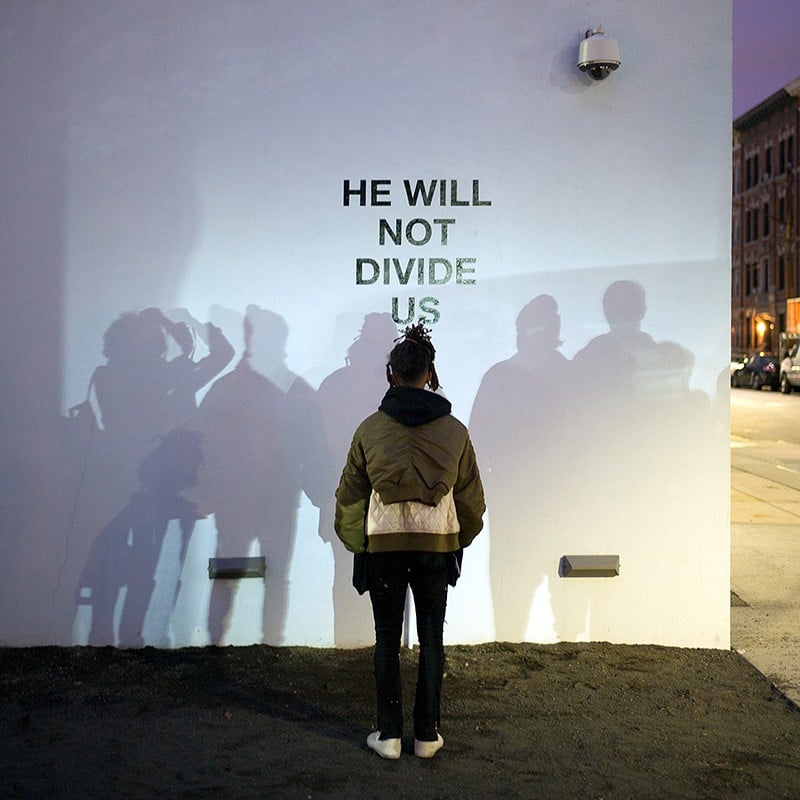Politics
Museum Cancels Shia LaBeouf’s Anti-Trump Project, Calls It ‘Flashpoint for Violence’
The collaborative project was supposed to last the length of the Trump presidency.

The collaborative project was supposed to last the length of the Trump presidency.

Sarah Cascone

HE WILL NOT DIVIDE US, the latest art performance piece for actor Shia LaBeouf and his collaborators, artists Nastja Säde Rönkkö and Luke Turner, was meant to last for the entirety of Donald Trump’s presidency, in defiance of the reality star-turned politician’s perceived message of hate and fear.
After just three weeks, however, New York’s Museum of the Moving Image has pulled the plug on the project, citing public safety concerns.
For the piece, the artists installed a camera, linked to an online livestream that broadcast 24 hours a day, seven days a week, outside the museum in Astoria. Passersby were invited to repeat the mantra “he will not divide us” into the camera. According to the artist statement, the performance was intended as “a show of resistance or insistence, opposition or optimism, guided by the spirit of each individual participant and the community.”
A statement from the museum on the abrupt closure claimed that the “artwork created an unexpectedly volatile situation,” and that there had been threats of violence in connection with the piece. Less than a week into the project, LaBeouf himself was arrested after the online feed caught him fighting with a protester who claimed, on camera, “Hitler did nothing wrong.”

Shia LaBeouf, Nastja Säde Rönkkö, and Luke Turner, HE WILL NOT DIVIDE US. Courtesy of Shia LaBeouf, Nastja Säde Rönkkö, and Luke Turner.
The livestream currently is black, with the message “the museum has abandoned us.” The page notes that while the museum has given up on the project “the artists, however, have not.”
“We are proud to have launched this engaging and thought-provoking digital art installation which was experienced by millions of online viewers worldwide,” wrote the museum, claiming that ending the project early was necessary because “the installation had become a flashpoint for violence and was disrupted from its original intent.”
Despite the outcome, the institution acknowledged that the project “generated an important conversation allowing interaction among people from many backgrounds and with different viewpoints.”